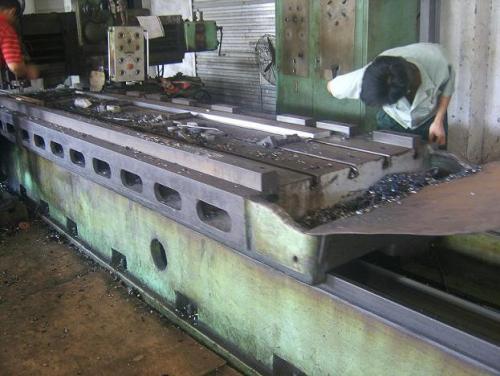Do large grinding machines have requirements for materials?
Large scale machining, not all materials can be fine processed, some materials are too hard, beyond the hardness of the machining parts, it is possible to break the parts, so these materials are not suitable for fine machining, except for the parts made of special materials, or laser cutting.
The materials for large-scale machining are divided into two categories: metal materials and non-metal materials.
As for metal materials, the hardness of stainless steel is the largest, followed by cast iron, followed by copper, and finally aluminum.
The processing of ceramics and plastics is attributed to the processing of non-metallic materials. Stainless steel material for large machining.

1. First of all, it is the requirement of material hardness. For some occasions, the higher the material hardness is, the better it is. It is only limited to the hardness requirements of machining parts. The processed materials cannot be too hard. If they are harder than the parts, they cannot be machined.
2. Secondly, the material is of moderate hardness, at least one level lower than the hardness of the parts. At the same time, it depends on what the function of the processed parts is to do and the reasonable material selection of the parts.
In a word, there are still some requirements for materials in large-scale machining, not all materials are suitable for machining, such as too soft or too hard materials. The former is not necessary for machining, while the latter is not.
Therefore, the most basic one is to pay attention to the density of the material before processing. If the density is too large, it is equivalent to the hardness. If the hardness exceeds the hardness of the machine (lathe tool), it cannot be processed. It will not only damage the parts, but also cause danger, such as the tool flying out and hurting people. For large-scale machining, generally speaking, for machining, the material material should be lower than the hardness of the cutter, so that it can be processed.
-
02-20
What is the most important parameter in CNC machining of Jiangmen?
We usually do CNC, no matter which programming software you use, no matter which version you use, in the final analysis, we are setting the following parameters.1: The cutting depth is the cutting dep
-
02-20
Cleaning steps of lubricating device of CNC milling machine
Many parts of the lubricating device of CNC milling machine need to be cleaned regularly. The specific cleaning methods are as follows. (1) Cleaning method of oil rope and felt. Oil rope and linole
-
02-20
How to choose the right cutting tool for Jiangmen CNC machining
How to select cutting tools reasonably in Jiangmen CNC machining The selection of cutting tools is carried out under the condition of human-computer interaction of NC programming. The tool and hand
-
02-20
What are the rust removal methods of Jiangmen CNC machining precision parts
The machining of fine parts or parts, such as bearings, etc. will produce embroidered corrosion due to improper storage conditions or rust prevention, which can not be treated by mechanical method at

